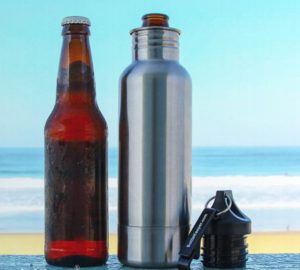The BottleKeeper – How Adam Callinan Made A Million Dollars Online
Adam Callinan is an entrepreneur, writer, and co-owner of a venture capital firm. Not only has he helped lots of small businesses at their early stage, but also he started many companies himself. He has some decent startup experience and here is a great story of his, a step by step explanation of how he started an automated million dollars online business with practically very little cash and no employees. This is the story of his latest and very successful online startup – www.thebottlekeeper.com. This article was originally published on entrepreneur.com, by Adam himself:
Recently I wrote a general overview, similarly titled, of the steps someone can put in place to lay the foundation for an automated business that might give you the ability to create seven-figure revenues, without the need for employees. Now I’m going to tell you, step by step, exactly what my co-founder and I did at BottleKeeper to accomplish this.
I do want to be clear that I’m not writing this column to plug my own company — instead, it’s being written as a direct result of feedback from fellow Entrepreneur.com readers from the last piece.
Here are the details about the product and business we created that has allowed us to generate seven-figure revenues without employees while maintaining the ability to operate the company from anywhere in the world with an Internet connection.
So, how did it happen?It started with launching an off-the-shelf e-commerce site toward the end of a crowdfunding campaign in late 2013, which was set up on WordPress with Paglines DMS, a “drag and drop” front-end editor, and WooCommerce.
If this sounds complicated, know that anyone with a computer can set this up in 10 minutes, and there are even more simple alternatives such as Shopify and Squarespace for e-commerce needs. Once live, the site was constantly tweaked and improved as we seemingly fumbled around in an attempt to figure it out.
With the continued development came the need for solutions that were well beyond my programming expertise — which is virtually none. The good news is that you can “plug in” a solution to nearly any issue or desire that you can imagine, many of which are free and take 30 seconds to configure. In our first website, we had up to 32 different plugins running simultaneously, which is a ton, but our sales processes were completely automated.
One of the most important plugins was a rewards and referral program, which was and is still aggressively based on “refer a friend, get a free BottleKeeper.” This was huge for leveraging consumer social sharing because it wasn’t the “get 10 percent off” that you typically see — we quickly learned that a bonus program must be significant to gain real traction.
The Facebook video push.
When Facebook launched its video-ad platform in mid-2014, we had been experimenting with image-based ads, but with minimal success. So, I made a short video of BottleKeeper in action with an off-the-shelf camera, edited it in iMovie and posted it in the “video views” category of the new platform. We targeted a fairly broad group of U.S.-based consumers between the ages of 25 to 64 with behavioral interests in common-sense topics such as beer, sports and outdoors, tailgating, boating, etc.
We simultaneously ran five different taglines for the video, with a budget of just $10 per day, to A/B test for the best response. Once complete, the video was launched with the winning tagline at the same daily rate — just $10.
The response to the video was incredible and within a week was returning more than $10 for each dollar spent. This great return allowed us to scale our sales just by increasing the ad spend on the video, which has continued to work exceptionally well and automated our monthly sales revenue.
At this point, the daily needs at BottleKeeper are mostly built around support functions. We use Desk.com to automate customer questions, which takes inbound requests via email and does not include the ability to call us — again, no employees, right?
Most questions, such as “when is green going to be back in stock” or “how do I use my referral link,” can be answered with a simple automated response. As we’ve continued to scale, our inbound questions have grown and it has become more difficult to manage them in the timely fashion that we require of BottleKeeper. So we contracted a virtual assistant that is extremely capable and works on the support cases for five hours per week, which is plenty of time once the processes are set up efficiently. Note that this person is not our employee, but another company’s employee.
Leveraging social media and outside help.As our social following grew, I was still manually creating all of the content that sparked interaction between the consumers and brand. This started with the daily posting of beer-based e-cards and memes but has grown to require much more — so instead of hiring an employee to manage this process, I hired a PR company.
One of the main benefits is that for the cost of employing someone that you must manage, motivate and train, you can bring on an entire team of people that are already managed, motivated and trained. I firmly believe that, in many cases, it’s better to pay another company, whose success is built entirely upon yours, to do all the hiring and hard work.
Well, this was a great story, wasn’t it? Don’t hesitate to share it with friends on your favorite social site.




